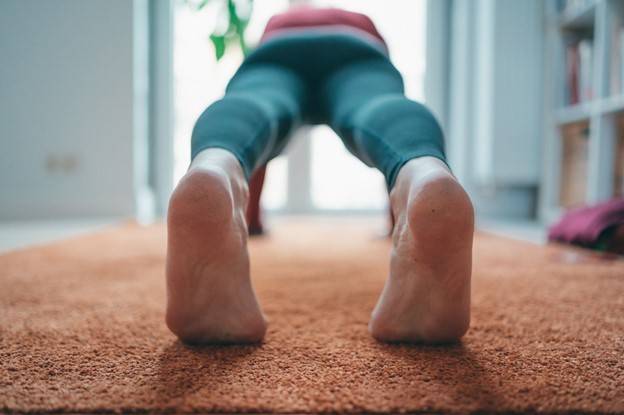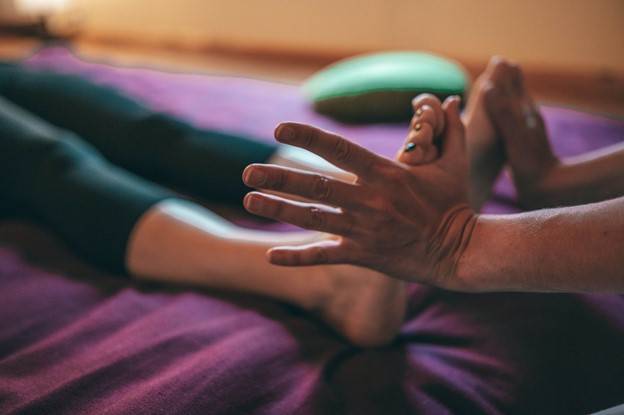Heel pain can be a debilitating inconvenience. Trouble walking, running errands, and finishing chores is made all the more difficult by a mild or severe pain in your feet. Pain may occur in the heel itself or behind the heel, where the Achilles tendon attaches to the bone. Occasionally, pain happens in the sides of the heel as well.

July 2021. This article is independently written by Fusion 360. All opinions given are the opinion of Fusion 360

Most cases of heel pain are attributed to plantar fasciitis, a condition caused by the damage or thickening of the thick band of tissue between the heel and the rest of the foot. Other common causes include Achilles tendinitis, inflammation, and injury. Heel pain often comes on gradually and increases in severity if not treated.
Heel pain relief will depend on the cause, but also the severity. The Kailo patch is here to help, and a combination of prevention, maintenance, and relief will get you back on your feet and living the life you deserve.
Prevention
Examining the reasons for heel pain is the first step in treatment. Some people are more likely to develop heel pain than others. Some causes of heel pain include:
-
Age: Plantar fasciitis is common between the ages of 40 and 60. Most mechanical ailments increase in likelihood with age. Staying active and taking care of your feet is an easy way to ensure that your feet age as gracefully as the rest of you.
-
Exercise: Constant strain via exercise is one of the most common causes of heel pain. Certain types of movement are likely to cause pain, including repetitive movement exercises like long-distance running, dance, and other aerobic activities.
-
Occupation: The same way repetitive exercise can lead to heel pain, occupations with repetitive movement can also be a cause. Hard surfaces are not ideal working conditions and can cause significant damage to your feet over time, especially if you already suffer from heel pain. Cooks, restaurant staff, factory workers, teachers, and any of those who spend long hours on their feet are at a higher risk of developing heel pain.
-
Obesity: Increased strain on the lower body joints could be a cause of heel pain. With obesity on the rise, more and more people may need to look to their diet to diagnose the reason for their heel problems.
- Foot Mechanics: Flat feet, raised arches, and postural irregularities could cause difficulties in walking. Over time, issues with foot mechanics can cause all sorts of problems, not the least of which is a pain in the heels.
If you have not seen a doctor to address the cause of your heel pain, that's your first step. The doctor always knows best and may spot things you would miss no matter how many articles you read.
Relief

Once you identify the cause with your doctor, choosing a course of treatment will be a bit simpler. If the pain is due to overuse, rest should be one of the first courses of action. Many of the causes of heel pain are at least partially due to inflammation, including pain associated with plantar fasciitis and Achilles tendonitis.
There are a few options for the treatment of inflammation in the heel joint, including:
-
Hot and Cold Therapy: While heat may make inflammation worse, it can help relax the muscles in the foot and improve circulation to the area you are treating. Cold can calm inflammation and reduce swelling but provides only temporary relief, not healing. Together, they may provide effective treatment.
-
Wear the Right Shoes: Many people choose their shoes based on their outfit or the latest fashion trend, but the right shoes can make all the difference to your feet. Arch support, fit, and form are all essential aspects of a good shoe.
-
Night Splint: Many people with plantar fasciitis find that a night splint will relieve some of the symptoms. A splint holds the Achilles tendon and plantar fascia in a stretch position, reducing heel pain early in the morning. It may also aid other types of heel pain by preventing the foot from resting in awkward positions while you sleep.
- Compression: Compression socks are an inexpensive solution to foot and heel pain. They increase blood flow, aid inflammation, and reduce swelling.
Maintenance
Maintaining your quality of life despite heel pain is as important as treatment of the pain itself. Changing your lifestyle to reduce inflammation can mitigate symptoms in the long term, although it may not give much immediate relief.
A few lifestyle changes that may give heel pain relief over time include:
A few lifestyle changes that may give heel pain relief over time include:
-
Diet: A healthy diet is essential to wellness. A poor diet exacerbates inflammation, so it is best to stay away from inflammatory foods such as processed sugar, alcohol, and fast food. A diet full of fruits, vegetables, whole grains, and lean proteins will do more for your health than any treatment that focuses only on the symptoms.
-
Exercises: If your heel pain is due to flat feet or high arches, specific therapeutic exercises can help build up the muscles in and around the foot. Consult with a physical therapist on which exercises might work best for your heel pain.
- Orthotics: Orthotics could be an option for everyday heel pain relief. The inserts work to relieve the tension points on the foot, reducing inflammation and irritation. Quality orthotics are made to order and fit your foot exactly.
Long-Term Heel Pain Relief
Long-term heel pain relief is multifaceted. Finding the cause, treating the symptoms, and maintaining the quality of life are all significant parts of the healing process. Consult with your doctor and be sure to take plenty of time to rest as your feet heal.
While you address your heel pain, the Kailo pain patch is here to help. Simply apply it near the site of discomfort or pain for instant relief.






